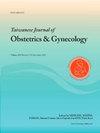韩国青少年经前综合症的患病率及其与抑郁症的关系:一项全国性的横断面研究
IF 2
4区 医学
Q2 OBSTETRICS & GYNECOLOGY
引用次数: 0
摘要
目的通过一项具有全国代表性的横断面调查,调查经前症候群和抑郁症状的患病率,并确定两者之间的关系。材料与方法采用韩国妇女健康相关问题研究(K-Stori)。在3000名14-17岁的青春期女孩中,研究对象是2970名初潮后的女孩。用PHQ-9量表评估抑郁症状。采用多变量logistic回归分析探讨与抑郁症状相关的因素。结果经前综合症患病率为70.5%。激惹(43.8%)、腹胀(32.8%)和乳房压痛(27.5%)是最主要的症状。抑郁症状的患病率为15.5%。有经前综合症的女孩比没有经前综合症的女孩更容易抑郁(OR, 1.70;CI, 1.31 - -2.20)。BMI与抑郁症状无关。然而,一个人对身体形象的满意度与抑郁症状之间存在显著的关联。吸烟者比不吸烟者更容易抑郁(OR, 1.64;CI, 1.10 - -2.45)。结论spms与抑郁症状有显著相关性。在抑郁症的治疗中应考虑经前综合症。我们的研究强调了多学科方法的重要性。本文章由计算机程序翻译,如有差异,请以英文原文为准。
Prevalence of premenstrual syndrome and its relationship to depression among Korean adolescents: A nationwide cross-sectional study
Objective
To investigate the prevalence of PMS and depressive symptoms and to determine their association among Korean adolescent girls using a nationally representative cross-sectional survey.
Materials and methods
The Korean Study of Women's Health Related Issues (K-Stori)was used. Of the 3000 adolescent girls aged 14–17 years, the study subjects were 2970 girls after menarche. Depressive symptom was assessed with the PHQ-9. Multivariable logistic regression analysis was used to investigate factors associated with depressive symptom.
Results
The prevalence of PMS was 70.5 %. Irritability (43.8 %), abdominal bloating (32.8 %), and breast tenderness (27.5 %) were the most predominant symptoms. The prevalence of depressive symptom was 15.5 %. Girls with PMS were more likely to be depressed than those who did not experience PMS (OR, 1.70; CI, 1.31–2.20). BMI was not associated with depressive symptom. However, a significant association was noted between satisfaction with one's body image and depressive symptom. Ever-smokers were more likely to be depressed than never-smokers (OR, 1.64; CI, 1.10–2.45).
Conclusions
PMS were significantly associated with depressive symptom. PMS should be taken into account in the management of depression. Our study emphasized the significance of a multidisciplinary approach.
求助全文
通过发布文献求助,成功后即可免费获取论文全文。
去求助
来源期刊

Taiwanese Journal of Obstetrics & Gynecology
OBSTETRICS & GYNECOLOGY-
CiteScore
3.60
自引率
23.80%
发文量
207
审稿时长
4-8 weeks
期刊介绍:
Taiwanese Journal of Obstetrics and Gynecology is a peer-reviewed journal and open access publishing editorials, reviews, original articles, short communications, case reports, research letters, correspondence and letters to the editor in the field of obstetrics and gynecology.
The aims of the journal are to:
1.Publish cutting-edge, innovative and topical research that addresses screening, diagnosis, management and care in women''s health
2.Deliver evidence-based information
3.Promote the sharing of clinical experience
4.Address women-related health promotion
The journal provides comprehensive coverage of topics in obstetrics & gynecology and women''s health including maternal-fetal medicine, reproductive endocrinology/infertility, and gynecologic oncology. Taiwan Association of Obstetrics and Gynecology.
 求助内容:
求助内容: 应助结果提醒方式:
应助结果提醒方式:


